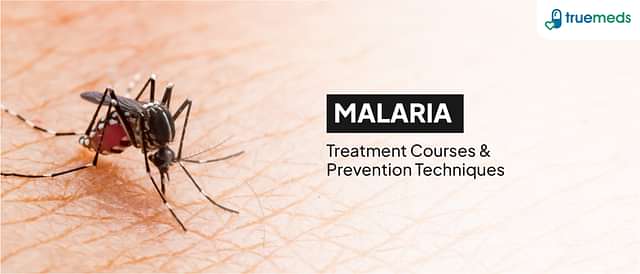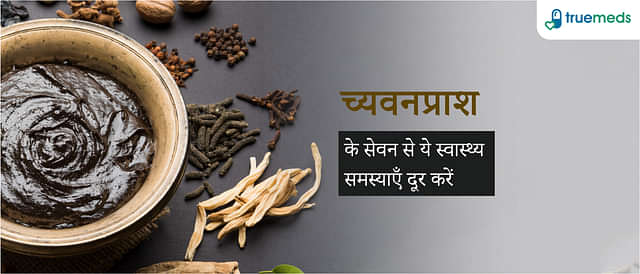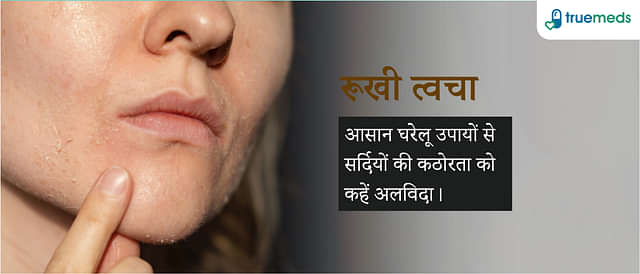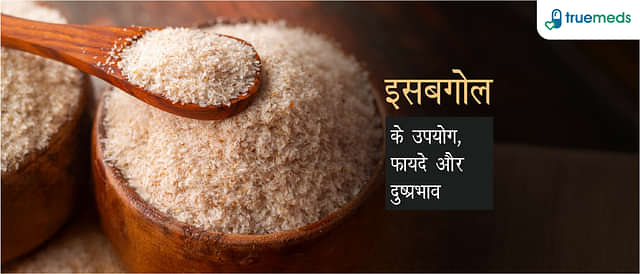Viral Fever: Symptoms, Causes, Prevention, and Treatment
Last updated on : 12 Dec, 2024
Read time : 18 min
Viral fever is an illness brought on by viral infection. It can be noticed by fever and flu symptoms. It can impact individuals of all ages and is generally related to seasonal variations, specifically during monsoon or winter. This fever regularly includes symptoms like entire body pains, headaches, and exhaustion. While viral fevers ordinarily are self-restricting and resolved within a few days, comprehending their causes, signs, and treatment is critical to stop their spread and reduce complications. Know about viral fever, its causes, symptoms, types, duration, complications, prevention and how to resolve it.
What is Viral Fever?
Viral fever refers to a temporary rise in body temperature caused by an underlying viral infection. It is the body’s natural response to fight off invading viruses. Unlike bacterial infections, viral infections are not treated with antibiotics and usually require supportive care until the immune system overcomes the virus.
Symptoms of Viral Fever
The sign and symptoms of viral fever can vary depending on the type of virus involved, but some common signs are generally present:
Here are the 14 common viral fever symptoms.
- High Temperature
- Body Aches
- Headache
- Fatigue
- Chills and Shivering
- Runny or Stuffy Nose
- Sore Throat
- Cough
- Loss of Appetite
- Sweating
- Skin Rash
- Digestive Issues
- Swollen Lymph Nodes
- Dehydration
Let’s explore each viral fever symptom in detail:
- High Temperature: One of the most prominent viral fever symptoms is a sudden increase in body temperature, often ranging from 100°F to 104°F.
- Body Aches: Generalised muscle pain and body aches are common during viral fevers, leaving the individual feeling weak and exhausted.
- Headache: Persistent headaches often accompany viral fevers, which can range from mild to severe in intensity.
- Fatigue: Extreme tiredness and lethargy are typical, even if the individual has had enough rest.
- Chills and Shivering: Patients may experience chills, despite a high fever, leading to shivering episodes.
- Runny or Stuffy Nose: Respiratory viruses may cause symptoms like a runny or blocked nose, similar to the common cold.
- Sore Throat: Irritation and pain in the throat are frequent, making swallowing uncomfortable.
- Cough: A dry or productive cough might develop, depending on the type of viral infection.
- Loss of Appetite: A reduced desire to eat is common, often due to nausea or general discomfort.
- Sweating: As the fever fluctuates, sweating can occur, especially after a spike in body temperature.
- Skin Rash: Some viral infections, like dengue or measles, may cause rashes on the skin.
- Digestive Issues: Symptoms like nausea, vomiting, or diarrhoea might be present, especially in gastrointestinal viral infections.
- Swollen Lymph Nodes: Enlarged lymph nodes, especially in the neck, can occur as the body fights off the infection.
- Dehydration: Due to fever and sweating, dehydration can set in if fluid intake is not adequate.
Causes of Viral Fever
Viral fever is caused by various viruses that infect the body and trigger an immune response. Here are the primary causes include:
- Consuming Contaminated Food or Water: Certain viruses, like norovirus and enteroviruses, can be transmitted through food and water that isn’t safe for consumption. These viruses can lead to gastrointestinal issues and fever. It’s crucial to ensure that your food and water are clean and hygienic before use.
- Insect Bites: Diseases like dengue, malaria, chikungunya, and Zika are transmitted through mosquito bites. If not identified and treated promptly, these illnesses can lead to severe health complications.
- Touching Contaminated Surfaces: Viruses can survive on surfaces for varying durations, and infection can occur if you touch these surfaces and then your face. This highlights the importance of regular handwashing and surface cleaning.
- Inhalation of Infected Droplets: Viral infections can occur when you are in close proximity to an infected person who sneezes or coughs without covering their mouth, releasing infected droplets into the air.
- Low Immunity: Individuals with weaker immune systems, such as infants, children, and the elderly, are more susceptible to viral infections and require heightened care to avoid contracting a viral fever.
- Exposure to Specific Viruses: Virus families such as Arenaviridae, Bunyaviridae, Filoviridae, and Flaviviridae are often associated with the onset of viral fevers.
- Direct Contact with Bodily Fluids: Some viruses, particularly those that cause haemorrhagic fevers, are spread through direct contact with infected bodily fluids. Such transmissions are more common in healthcare settings or regions where these viruses are prevalent.
Types of Viral Fever
There are various types of viral fevers, classified based on the causative virus and symptoms. The 5 main types of fever include:
- Respiratory Viral Fever: This kind of viral fever generally affects the respiratory system, inflicting signs and symptoms together with cough, sore throat, runny nostril, and shortness of breath. Common viruses that cause respiratory viral fever include influenza, respiratory syncytial virus (RSV), and coronaviruses. These fevers are often contagious, spreading via droplets from coughs and sneezes, and might lead to complications like bronchitis or pneumonia if not controlled.
- Exanthematous Viral Fever: Exanthematous viral fevers are characterised by pores and skin rashes or eruptions alongside fever. These rashes can range in appearance, ranging from small purple spots to large, raised patches. Diseases like measles, rubella, and chickenpox fall under this type of viral fever. These fevers are typically associated with a viral contamination that spreads through direct contact or respiratory droplets, regularly visible in kids but can affect adults as well.
- Viral Enteritis: Viral enteritis is a contamination of the intestines caused by viruses, including norovirus, rotavirus, or adenovirus. It results in inflammation of the belly and intestines, resulting in signs and symptoms like diarrhoea, vomiting, stomach ache, and fever. This condition is often called the “belly flu” and is usually spread through infected food, water, or close contact with an infected person.
- Neurologic Viral Fever: Neurologic viral fevers affect the central nervous system and may cause symptoms such as confusion, seizures, or even lack of recognition. Viruses, such as the West Nile virus, rabies, and certain enteroviruses, are recognised to cause these fevers. These infections can be serious and require immediate scientific attention to prevent long-term headaches.
- Hemorrhagic Viral Fever: Hemorrhagic viral fevers are severe infections characterised by using an excessive fever, bleeding, and organ failure. Viruses which include Ebola, dengue, and yellow fever are known ro cause this form of fever. These diseases frequently occur in specific regions and unfold through mosquitoes or direct contact with infected physical fluids. Hemorrhagic fevers are tremendously dangerous and require quick medical attention.
Duration of Viral Fever
The duration of viral fever typically lasts between three to seven days, depending on the virus and the individual’s immune response. In some cases, symptoms may persist longer, but most viral fevers resolve within a week without complications.
Viral Fever Diagnosis
Diagnosing viral infections can be particularly challenging because the symptoms often mimic those of bacterial infections, making it difficult to pinpoint the exact cause. Viral and bacterial infections may present with similar signs such as fever, fatigue, and body aches, leading to potential confusion without further investigation. To ensure an accurate diagnosis, doctors take a comprehensive approach. They’ll carefully assess your medical history. This helps to understand any underlying conditions or previous infections that might influence your current state. Additionally, the doctor may ask specific questions about the duration and nature of your symptoms to gauge the severity of the illness and determine whether immediate intervention is necessary.
Based on this evaluation, a series of diagnostic tests may be recommended to identify the exact viral pathogen responsible for your condition. These tests might include:
- Swab tests: Samples taken from the throat, nose, or other affected areas to detect the presence of viral agents.
- Blood tests: These can reveal markers of infection and help distinguish between viral and bacterial causes.
- Antibody tests: To determine if your body has produced specific antibodies in response to a viral infection.
- Specific viral antigen tests: These tests identify particular viral antigens, which can confirm the presence of a specific virus.
- Urine tests: Sometimes used to detect viral particles or by-products of infection.
In cases where the symptoms suggest more severe viral infections, additional tests may be needed. For instance, specific tests for conditions like chikungunya, dengue, and malaria could be advised, especially if you have been in areas where these infections are prevalent.
Medical Treatment for Viral Treatment
There is no specific cure for viral fever, as viruses do not respond to antibiotics. However, viral fever symptoms can be managed with the following treatment options.
- Antipyretics: Medications like paracetamol/acetaminophen and ibuprofen are used to reduce fever and relieve body aches.
- Antiviral Medications: If the viral cause is confirmed, antivirals, such as oseltamivir, zanamivir, peramivir, and baloxavir marboxil can be used in some cases.
- Hydration: Maintaining fluid intake is essential to prevent dehydration during fever.
- Rest: Adequate rest is crucial for recovery, allowing the body to focus on fighting the infection.
Management and Care During Viral Fever
Proper management of viral fever is crucial to ensure a smooth and swift recovery. The cornerstone of viral fever treatment lies in allowing your body ample time to heal, which means prioritising rest above all else. Resting not only conserves your energy but also helps your immune system focus on fighting off the viral infection without the added strain of physical exertion.
In addition to resting, medication, and viral fever treatment at home, it’s advisable to avoid any form of exertion. Engaging in physical activities or mental stress can strain your body, potentially prolonging your recovery. Creating a comfortable environment such as keeping the room at a moderate temperature, wearing light clothing, and using a fan or cool compress to manage fever—can significantly enhance your comfort levels during recovery.
Home Remedies for Viral Fever
Here are some viral fever treatments at home to reduce fever:
- Ginger Tea: Helps soothe sore throats and reduce inflammation. You can also mix ginger juice with honey to soothe the throat and boost immunity.
- Honey and Lemon: A mix can relieve cough and sore throat.
- Herbal Teas: Teas like chamomile or peppermint can ease digestive issues.
- Turmeric Milk: Mix half a teaspoon of turmeric powder and a quarter teaspoon of black pepper powder in a cup of hot milk. Drink this twice a day to help reduce fever.
- Sponging: Use a sponge or towel soaked in lukewarm water to gently cool down your body.
- Tulsi (Basil) Leaves: Boil tulsi leaves in water and drink it to help reduce fever3.
- Fenugreek Water: Soak fenugreek seeds in water overnight and drink the water in the morning.
- Nutritious Food: Eat light, nutritious foods like soups and fruits to keep your energy levels up.
Also Read: Top 17 High Protein Rich Foods for a Healthy Lifestyle
Viral Fever Complications
Viral fever, sometimes can lead to serious complications if not managed properly. It may cause severe blood infection, pneumonia, brain inflammation and even multiple organ failure. Understanding these potential risks is crucial for ensuring timely treatment and preventing long-term health issues.
Here are the complications associated with viral fevers.
- Kidney Failure: Prolonged viral fever, particularly when caused by certain rare and aggressive viruses, can strain the kidneys. The infection can lead to a decrease in kidney function, potentially resulting in kidney failure.
- Liver Failure: In some cases, severe viral fever can impact liver function, potentially leading to liver failure. This is more likely in instances where the viral infection directly targets the liver, such as with hepatitis viruses.
- Nervous System Complications: Viral fevers can sometimes affect the nervous system, leading to neurological symptoms such as confusion, disorientation, or difficulty in coordinating movements. In extreme cases, viral infections can cause encephalitis, an inflammation of the brain, which is a medical emergency.
- Seizures: High-grade fever, especially in young children and the elderly, can sometimes trigger febrile seizures. These seizures are alarming and can result from the rapid increase in body temperature associated with viral infections.
- Respiratory Complications: Viral fevers, particularly those caused by respiratory viruses like influenza, can lead to serious lung complications. Conditions such as pneumonia or bronchitis may develop, resulting in difficulty breathing, persistent coughing, and chest pain.
- Dehydration: Viral fever often causes excessive sweating, vomiting, and a loss of appetite, all of which can lead to dehydration. Dehydration is a significant concern, especially when fluid intake is insufficient to replace what is lost. Symptoms like dry mouth, dizziness, and reduced urine output signal dehydration, highlighting the importance of staying well-hydrated during a viral infection.
Viral Fever in Different Age Groups
Understanding how viral fevers affect various age groups allows for better recognition of symptoms and timely treatment seeking. Let us explore how viral fevers impact children and adults of differing ages.
- Infants and toddlers: They are particularly susceptible to the dangers of viral fevers due to their immature immune system. They are prone to dehydration and febrile seizures, necessitating vigilant monitoring.
- Adults: Generally, we recover quickly from viral fevers, but those with underlying health conditions or weakened immune systems may experience more severe symptoms and a longer recovery period.
- Elderly: Older adults face inclined risks of complications stemming from viral fevers on account of typical age-related immune weakening. They may require intensive observation and support to rule out the potent risks.
Viral Fever Prevention
Preventing viral fever involves:
- Vaccination: Staying up-to-date with vaccines, like the flu vaccine, can prevent certain viral infections.
- Hygiene Practices: Practising good hygiene is fundamental in preventing viral infections. Regular handwashing with soap and water, especially after coughing, sneezing, or touching potentially contaminated surfaces, is a simple yet powerful defence against viruses. Additionally, using hand sanitizers when soap and water are not available can reduce the risk of transmission.
- Prevent mosquito bite: Preventing mosquito bites is essential in regions where these viruses are prevalent. Use insect repellents on exposed skin, wear long-sleeved clothing, and sleep under mosquito nets to reduce the risk of being bitten. Eliminating standing water around your home, where mosquitoes breed, is another effective measure to control their population and reduce the risk of mosquito-borne viral fevers.
- Social Distancing: During outbreaks of contagious viral infections, practising social distancing can significantly reduce the spread of the virus. This involves maintaining a safe distance from others, avoiding crowded places, and limiting social interactions, especially in indoor settings.
- Disinfect contaminated surface: Viruses can survive on surfaces for varying periods, making it important to regularly disinfect commonly touched objects and surfaces. This includes doorknobs, light switches, mobile phones, and countertops. Using appropriate disinfectants can help kill viruses on surfaces, reducing the likelihood of transmission.
- Healthy Lifestyle: Maintaining a healthy lifestyle is a proactive way to strengthen your immune system, making you less susceptible to viral infections. A balanced diet rich in fruits, vegetables, and whole grains provides essential nutrients that support immune function.
Diet and Nutrition During Viral Fever
During viral fever, it’s important to focus on a diet that supports your immune system and helps your body recover. Here are some diet and nutrition tips:
- Soups: Light and nutritious soups, such as lentil soups, spinach soup, vegetable broth or chicken soup, are easy to digest and help keep you hydrated.
- Khichdi: A simple dish made from rice and lentils, khichdi is easy on the stomach and provides essential nutrients.
- Citrus Fruits: Fruits like oranges, lemons, and sweet limes are rich in vitamin C, which boosts immunity.
- Herbal Teas: Teas made from ginger, tulsi (basil), and mint can help soothe the throat and reduce inflammation.
- Turmeric Milk: Known for its anti-inflammatory properties, turmeric milk can help reduce fever and boost immunity.
- Oatmeal: A versatile and nutritious option, oatmeal can be prepared in various ways and is easy to digest.
- Boiled Vegetables: Vegetables like spinach, carrots, and bottle gourd are rich in vitamins and minerals, and are easy to digest when boiled.
- Coconut Water: Coconut Water helps maintain electrolyte balance and keeps you hydrated.
- Foods to Avoid: Avoid fried, spicy and junk food. These can be hard to digest, cause dehydration and may worsen symptoms.
Maintaining a balanced diet with these foods can help you recover faster. If you have any specific dietary restrictions or symptoms, it’s best to consult a doctor.
Here are the List of OTC Medications for Viral Fever:
| Sr. number | Product name | Composition |
| 1 | Crocin Advance Tablet 20 | Paracetamol/acetaminophen (500 Mg) |
| 2 | Himalaya Koflet H Ginger Lozenges 6 | Barberi (4 Ml), Kathinjar (Ocimum Canum) (2 Ml) , Nimbu Tulsi (Ocimum Basilicum Citriodorum) (0.5 Ml) , Tulsi Patra (0.5 Ml) , Vantulsi (Ocimum Gratissimum) (1 Ml) |
| 3 | Dolo 500 Tablet 15 | Paracetamol/acetaminophen (500 Mg) |
| 4 | Paracip 500 Tablet 10 | Paracetamol/acetaminophen (500 Mg) |
| 5 | Ibuprofen 400 Tablet 10 | Ibuprofen (400 Mg) |
| 6 | Dabur Tulsi Drops | Mahasudarshan Choorna (600 Mg), Tribhuvankirti (130 Mg) |
| 7 | Zandu Trishun Tablet 6 | Adhatoda Vasika (Vasaka) (37.4 Mg), Anise Oil (0.0015 Ml) , Dalchini Oil (0.0003 Ml) , Eucalyptol (0.0006 Ml) , Glycyrrhiza Glabra Extract (12.96 Mg) , Kushta Abrak Safaid (12.96 Mg) , Mulethi Glycyrrhiza Glabra (43.24 Mg) , Putiha (Mentha Arvensis) (2.33 Mg) , Roghan Sanuadar (0.0003 Ml) , and Shyam Tulsi (Occimum Basilicum) (32.4 Mg) |
| 8 | Hamdard Sualin Tablet 60 | Adhatoda Vasika (Vasaka) (37.4 Mg), Anise Oil (0.0015 Ml), Dalchini Oil (0.0003 Ml), Eucalyptol (0.0006 Ml), Glycyrrhiza Glabra Extract (12.96 Mg), Kushta Abrak Safaid (12.96 Mg), Mulethi Glycyrrhiza Glabra (43.24 Mg), Putiha (Mentha Arvensis) (2.33 Mg), Roghan Sanuadar (0.0003 Ml), and Shyam Tulsi (Occimum Basilicum) (32.4 Mg) |
| 9 | Himalaya Septilin Tablet 60 | Amalaki (32 Mg), Guduchi (98 Mg), Guggul Extract (0.324 Gm), Maharasnadi Quath (130 Mg), Manjistha (64 Mg), Shankh Bhasma (64 Mg), Shigru (32 Mg) and Yashtimadhu (12 Mg) |
| 10 | Himalaya Tulasi Tablet 60 | Tulasi (250 Mg) |
Conclusion
Viral fever is a common ailment experienced by many at some stage. Though unpleasant, grasping the signs, origins, and suitable remedies can aid considerably in properly dealing with the sickness. Taking precautionary actions like practising cleanliness habits, boosting immunity, and vaccination can prevent falling sick easily. Likewise, recovery can be hastened by reducing exposure and seeing a doctor promptly if feeling drastically under the weather. Overall, understanding viral fever empowers you to limit suffering and get back to regular self more rapidly.
FAQs
Viral fever typically lasts 3 to 7 days, but the exact viral fever duration can vary depending on the type and severity of the infection.
Paracetamol is commonly recommended for viral fever symptoms to help reduce fever and reduce aches.
Viral fever is caused by viruses and usually subsides on its own, while infection fever can be caused by bacteria requiring specific treatment like antibiotics.
Viral fever symptoms are generally mild, while dengue fever presents with severe headaches, joint pain, and a drop in platelet count.
Yes, viral fever can recur, especially if the initial infection isn’t fully resolved or if the immune system is still weak.
Viral fever often rises at night due to the body’s natural circadian rhythm and the immune system’s heightened activity during this time.
Yes, a lukewarm bath can help manage viral fever symptoms by cooling the body, but avoid cold baths as they may cause chills.
Consuming foods rich in vitamin C, folate, and hydration, along with medications, is recommended to increase platelet count during viral fever.
Viral fever symptoms can range from mild fatigue and fever to severe headaches, joint pain, and stomach upset.
Paracetamol is often the best medicine for viral fever treatment, helping to reduce fever and alleviate pain.
Disclaimer
Our healthcare experts have carefully reviewed and compiled the information presented here to ensure accuracy and trustworthiness. It is important to note that this information serves as a general overview of the topic and is for informational purposes only. It is not intended to diagnose, prevent, or cure any health problem. This page does not establish a doctor-patient relationship, nor does it replace the advice or consultation of a registered medical practitioner. We recommend seeking guidance from your registered medical practitioner for any questions or concerns regarding your medical condition.
Popular Articles
Recommended Articles
Recent Articles
Top-Selling Medicines:
...View more
Top-Selling OTC:
...View more
Subscribe
Registered Office Address
Grievance Officer
Download Truemeds

Contact Us
Our customer representative team is available 7 days a week from 9 am - 9 pm.
v3.7.5
Our Payment Partners


























































